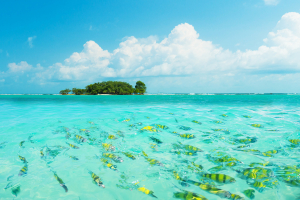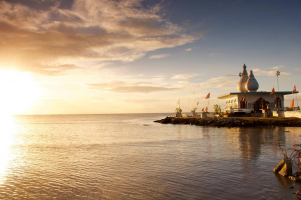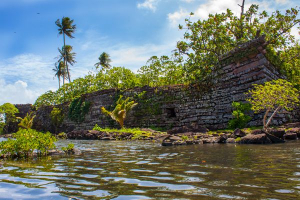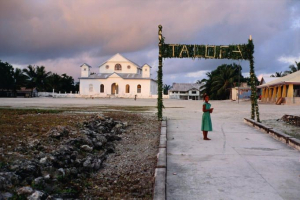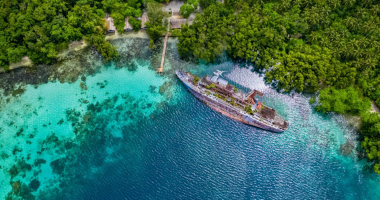Top 3 Most Beautiful Historical Sites in Papua New Guinea
Papua New Guinea is an exotic island country off the North coast of Australia. Sharing the island of New Guinea with Indonesia and also consisting of a number ... read more...of offshore islands in the region of Melanesia, the country is home to a rich tribal culture that subsumes more than 800 languages and several tribes. The fascinating culture of Papua New Guinea is best exhibited in the numerous places to visit in Papua New Guinea, and is popular with tourists around the globe. Other than these places, it provides a list of the most beautiful historical sites in Papua New Guinea.
-
The J.K. McCarthy Museum is a section of the National Museum and Art Gallery, which is one of the most beautiful historical sites in Papua New Guinea. It is located in West Goroka, in the Eastern Highlands Province, in the back corner of the National Sports Institute. John Keith McCarthy, a distinguished patrol officer who served in the Highlands region before becoming a member of the Old House of Assembly and a previous member of the National Museum & Art Gallery Board of Trustees, is honored with the museum's name.
The museum is a project of the Goroka Rotary Club. It was founded to accompany the yearly Goroka Show, with the goal of documenting, preserving, and promoting Eastern Highlands Province's cultural history for future generations. The building's architectural design is based on a traditional highland roundhouse. It first opened its doors to the general public in 1965.
The museum's first acquisition was a gift of 64 artifacts from McCarthy's personal collection. The museum today houses about 6,000 pieces in its six galleries, which include the Niugini Room, Giddings Gallery, Leahy Wing, Soso Subi, and Archaeology Room. The museum is open for visitors Monday through Friday, from 8 a.m. to 4 p.m.
TripAdvisor 
Travelation -
Lae, located near the mouth of the Markham River, is a town and port on the Huon Gulf. The Lae War Cemetery is located near the Botanical Gardens in the centre of Lae. In the early months of 1942, Japan had a crushing air supremacy, and the initial Japanese invasion of New Guinea targeted Lae and its surrounding airfields. 100 bombers pounded Lae and Salamaua on January 21, 1942, but land forces did not capture the region until March 7, when 3,000 Japanese landed at Lae.
On July 21, landings were made at Salamaua, as well as Buna and Gona on the east coast, in preparation for a drive across the Papuan peninsula via the Owen Stanley Mountains to Port Moresby. That was the start of the crucial phase of the New Guinea campaign. The southerly march began in Lae and continued until it came to a standstill 60 kilometers south of Port Moresby at Ioribaiwa Ridge. The Lae War Cemetery was started in 1944 by the Australian Army Graves Service and handed over to the Commission in 1947. The graves of soldiers who died in the New Guinea campaign were relocated here from the temporary military cemetery.
Among the Indian casualties were soldiers from the unified Indian army who were taken prisoner during the fighting in Malaya and Hong Kong. The vast majority of the unidentifiable was recovered between But airfield and Wewak, where they had died while working in work groups. The 2/9th Australian Infantry Battalion was one of the two British soldiers, while the Hong Kong-Singapore Royal Artillery was the other. The Merchant Navy lost four men when the S.S. Gorgon was bombed and sunk in Milne Bay in April 1943, while the naval fatalities were killed or died as a result of injuries sustained on H.M. Ships King George V, Glenearn, and Empire Arquebus.

Twitter 
Twitter -
Parliament Haus is the unicameral national legislature and one of the most beautiful historical sites in Papua New Guinea (PNG). It was created in 1964 as the House of Assembly of Papua and New Guinea but gained its current name after the nation was granted independence in 1975. The main Parliament Haus building is in the style of a Maprik-or Sepik-style Haus Tambaram. At the same time, the attached, circular cafeteria follows Highland design principles, and a mosaic features Papua New Guinea motifs unmistakably.
The main building has been built in the fashion of the Sepik or Maprik Tambaram, while the attached cafe is a circular building that reflects more of the ethos of the highlands. There are other markers inside the building that reflect the extensive cultural heritage of the country—the lobby doors are miniaturized Kundu, which are traditional drums used in ceremonies.
The cavernous lobby is entered through doors whose handles are stylized Kundu drums—an hourglass-shaped drum with lizard skin. Inside, a towering wood carving represents the four regions of PNG. The receptionists are usually happy to walk you through the building’s design and history. Tucked away, several glass displays showcase the nation’s wondrous insect life, including the native Queen Alexandra’s Birdwing—the world’s largest butterfly, with a 30cm wingspan. It’s possible to visit the chamber and witness parliament when it’s sitting.
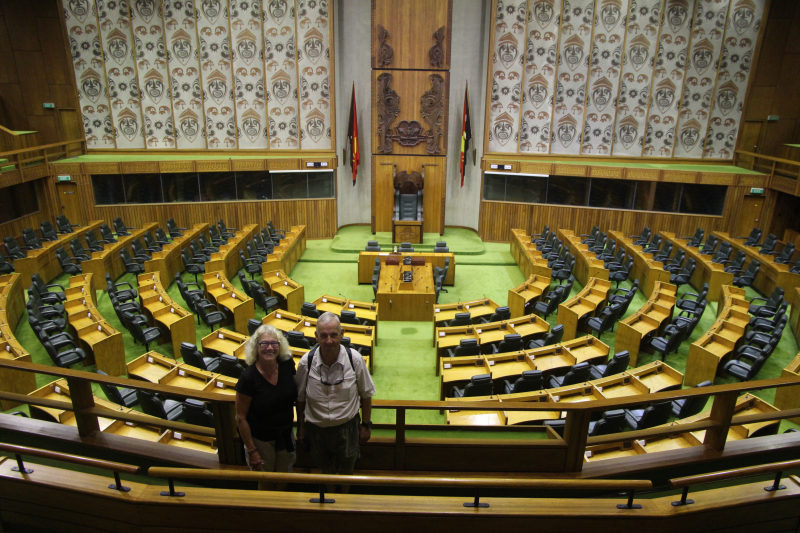
Where to next? 
CNN





